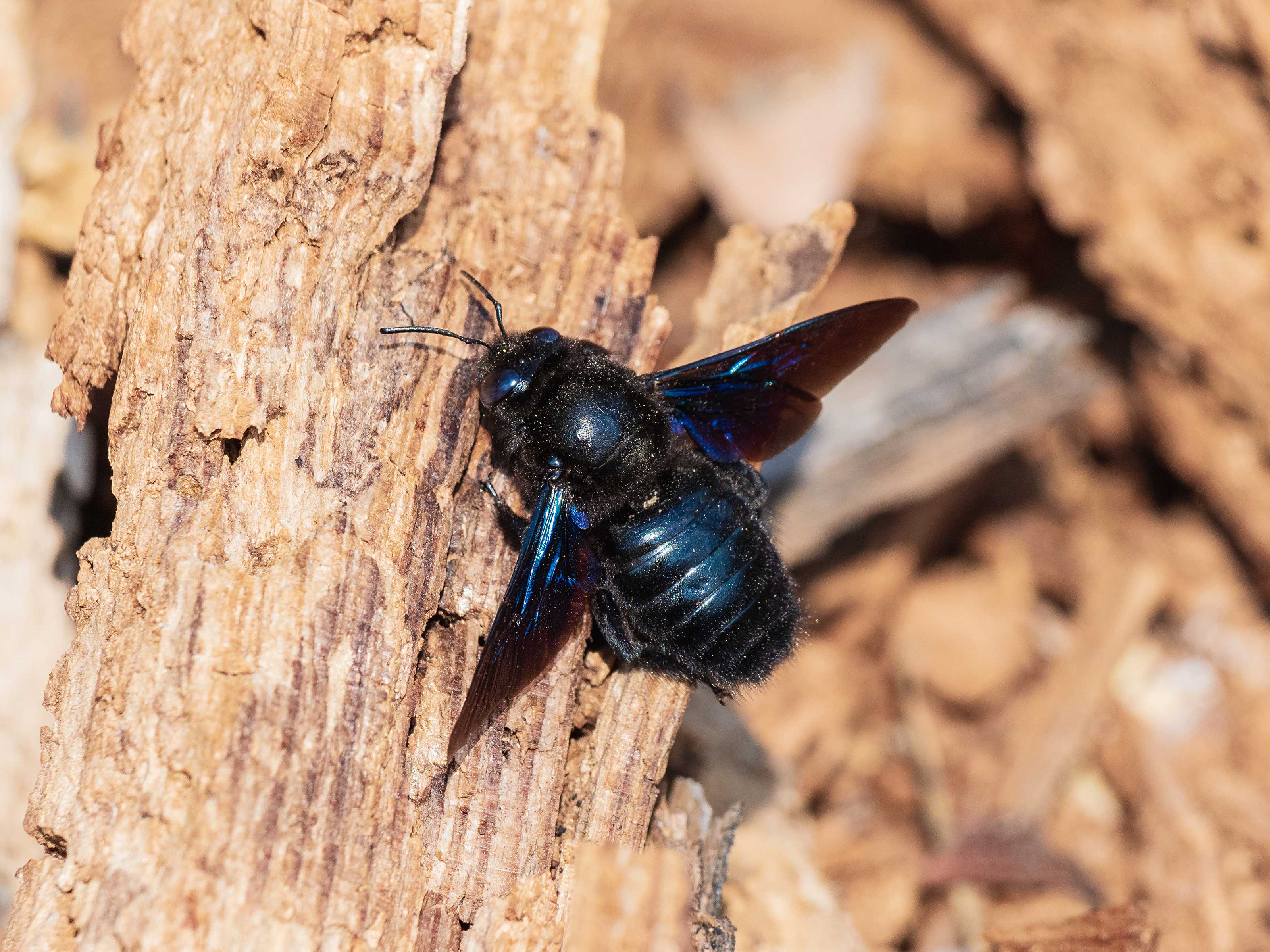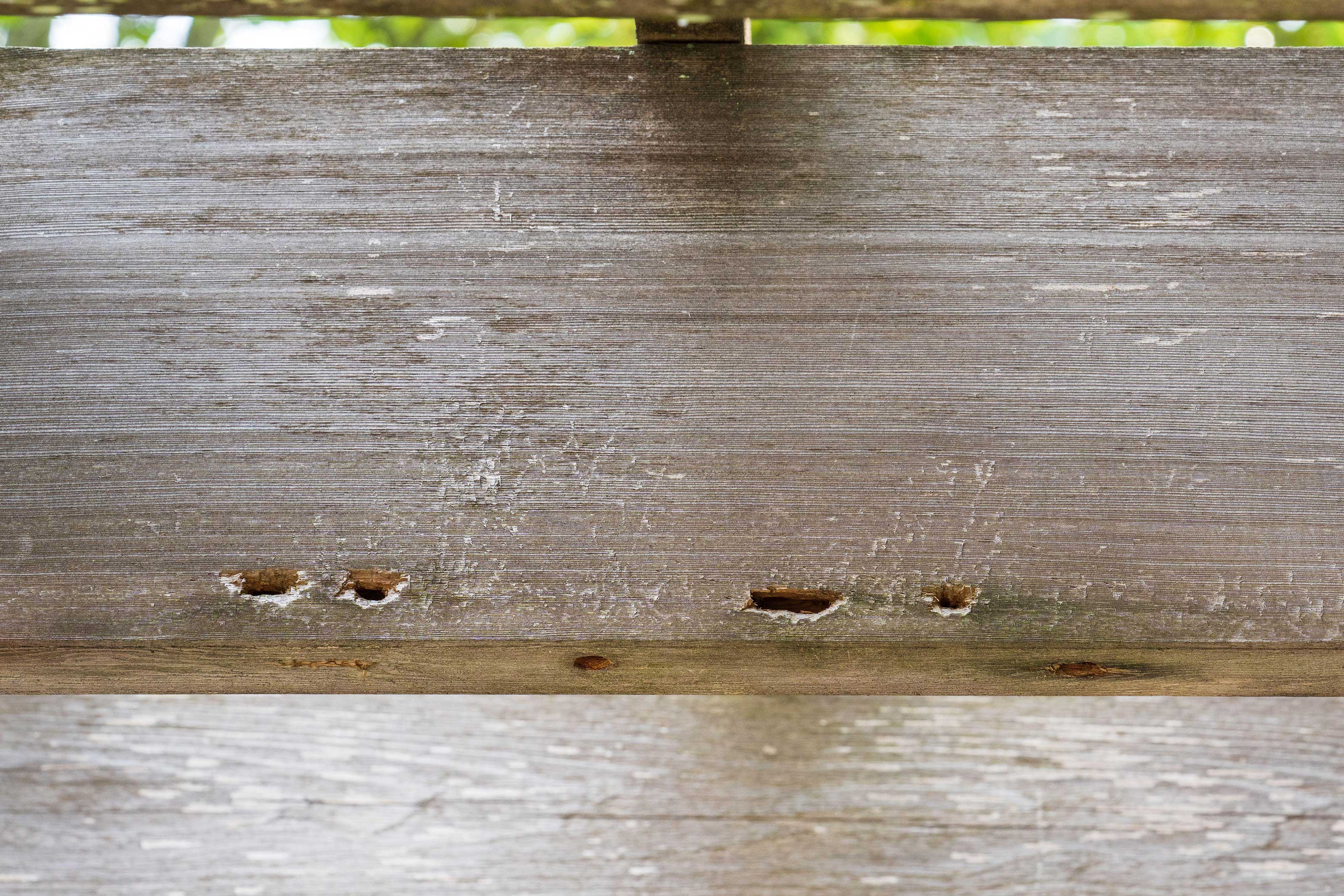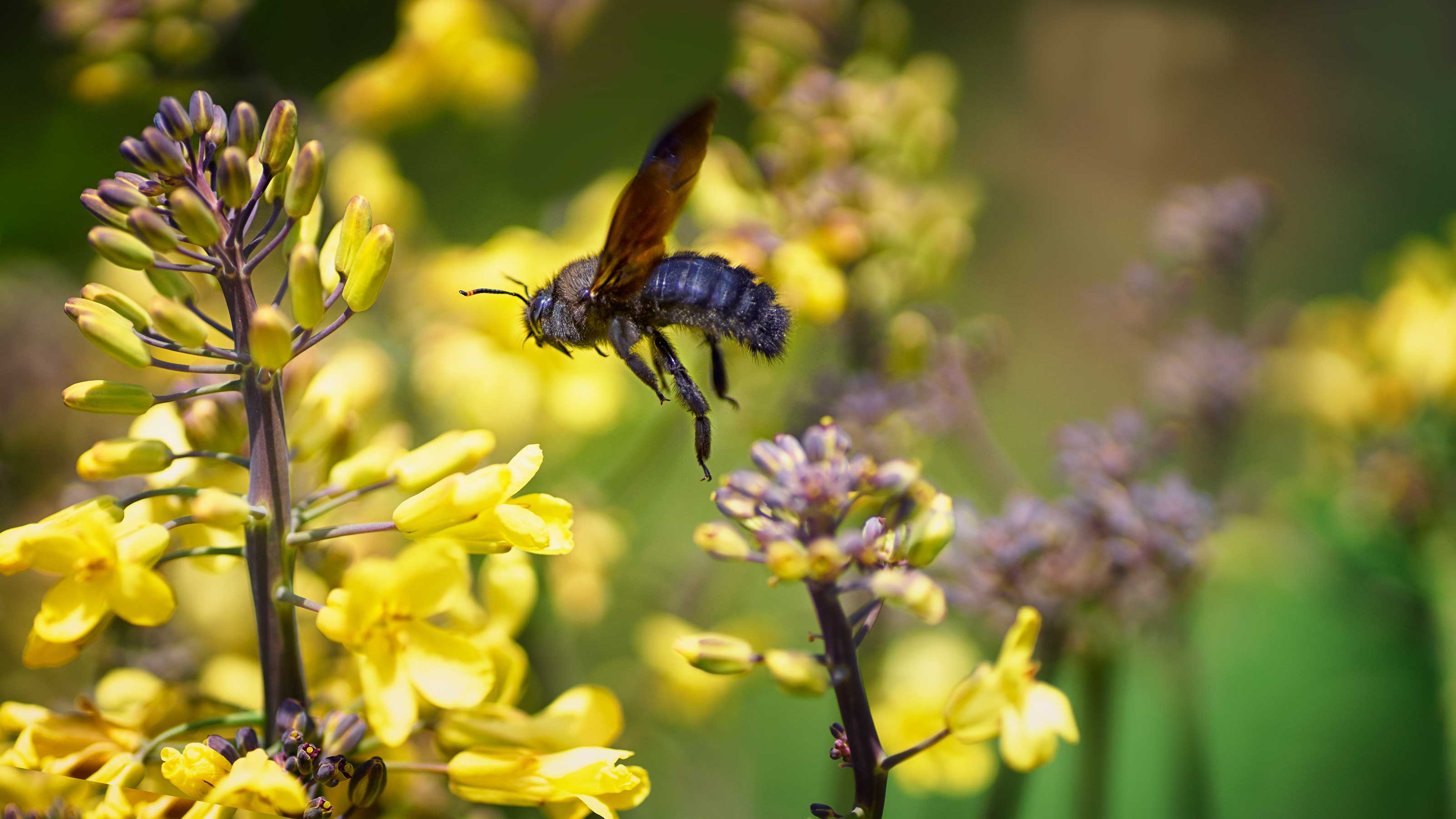How to get rid of carpenter bees: protect your wooden structures from pests with this advice
Are you wondering how to get rid of carpenter bees? Take a look at these tips – from insecticide methods to more natural approaches


Want to know how to get rid of carpenter bees? If you have lots of lovely wooden structures in your garden – we're talking decking, pergolas, even sheds – then it's worth knowing how to clear these pests from your plot.
Why's that? Well, carpenter bees are different from the well-loved bumble or honey variety. True, they look different (more on that later), but the problem with them is that they like to tunnel into wood to lay their eggs. Hence, 'carpenter' bees.
Their habit of boring through wood can look unsightly, but more importantly, it can be structurally damaging. This is especially the case if the same area of wood is infested over a few years, which is common. What's more, the holes can encourage moisture getting into the material, which can lead to rot.
All in all, they're bad news for your decking, your pergola, or your wooden garden furniture. But just like learning how to get rid of ants, it's not too tricky to learn how to deter these pests, too.
What do carpenter bees look like?
First of all, you'll need to know if it's actually carpenter bees that you're dealing with. Here's what to look out for:
- Carpenter bees tend to fly solo rather than in colonies.
- They are large in size, similar to bumblebees.
- However, unlike bumblebees, they don't have yellow markings on their abdomens. Instead, their abdomens tend to be all black.
- Carpenter bee's abdomens also tend to be smooth and shiny, whereas bumblebees' are covered in small hairs.
- As well as being able to identify what these insects look like, it's also worth checking your pergola ideas and other structures in your garden for telltale signs. These are round, typically smooth holes that are around half an inch in diameter. It doesn't take long for the bees to create the holes, so if it's a new hole you might spot sawdust around the perimeter too.

Before you learn how to get rid of carpenter bees, it's important to be able to identify them
How to get rid of carpenter bees without killing them
Although they may be a nuisance, carpenter bees are still pollinators, so are valuable to the environment. This means that it's best to try to deter them through natural means, without killing them or potentially other pollinators and wildlife in the process.
Here are a few tips to try:
- Create a natural spray using citrus fruit and douse the infected area. To make the solution, boil up rinds of the likes of lemons, oranges, limes, and grapefruits in water before transferring to a spray bottle. If you don't have fresh fruit to hand, a few drops of citrus oils mixed into water is also worth trying. It's best to test the solution on an inconspicuous area first, to check that it doesn't affect the finish of the wood.
- Try the approach above but switch out the citrus for almond oil – it's known to have similar carpenter-bee-deterring effects.
- Carpenter bees are known to be sensitive to sound, so if you've spotted damage on your property, try positioning a radio nearby and playing it loudly for a couple of days, as suggests The Home Depot team. The vibrations will help to warn them off. However, you may want to sure this approach up with your neighbors first.
- Carpenter bees are less tempted to burrow into varnished or painted wood, so to help prevent them boring into your structures in the first place, consider giving them a fresh new look. Take a look at our guides on how to paint a shed and our best exterior wood paint buying guide for tips.
If you're a fan of these eco-friendly approaches, you might like our wildlife garden ideas, too.

When considering how to get rid of carpenter bees, it's worth remembering that they are valuable pollinators. Opt for non-lethal methods where possible
How to get rid of carpenter bees with a bee trap
If the above methods don't seem to be working, you might want to take a more aggressive approach. There is still a way you can get rid of carpenter bees without turning to toxic chemicals, though...
- A bee trap will attract the carpenter bees and prevent them from escaping.
- Hang the traps near the affected area of your garden. Or, if you're simply using them as a preventative measure, hang them in sunny corners of your plot, near wooden materials.

Want to know how to get rid of carpenter bees? A bee trap can be convenient and effective
How to get rid of carpenter bees with insecticide
Of course, the fastest and perhaps most reliable way to rid your garden of carpenter bees is by turning to insecticide.
- Apply a suitable insecticide, such as a carpenter bee spray, directly on and around the holes, says The Home Depot. This can be effective for new intrusions. Spray heavily in early spring, then continue to periodically spray throughout the summer. Be sure to check the label before you get started though, as some application methods vary.
- You can also use insecticidal dust, which prevents larvae from reproducing. Use a hand duster to spray the dust directly into the hole, says The Home Depot, but again, check the label first.
- After a few days of applying the insecticide, the bees should have died. Seal up the holes to prevent new bees nesting the following winter. You can do this with a piece of wooden dowel or caulk.
- Remember to wear protective clothing, including eye goggles, whenever dealing with insecticide.
- For larger infestations, you may wish to hire a professional to take care of the issue for you.
Carpenter bees might not be the only problem in your plot. Take a look at these other garden pests to look out for.

Learn how to get rid of carpenter bees to avoid this happening to your pergola
How to get rid of carpenter bees with WD-40
You're likely to have WD-40 – a well-known water-displacing spray – already in your shed or garage. Well, it can be effective at wiping carpenter bees out (and many other insects for that matter). However, be aware that it smells strong, and is toxic – so not one to try around children or pets, or if you want to encourage other pollinators to your plot. It's also very flammable which can lead to fire risk, especially during drought season.
If you still want to give it a go, simply apply it as you would a normal pesticide spray (as directed above) – covering exposed wood to deter carpenter bees from nesting, or applying it directly into the holes.
- Need to know how to get rid of wasps, too? There are lots of tips in our guide.

Although male carpenter bees can seem intimidating, they cannot harm you
Do carpenter bees sting?
The male carpenter bees, although may seem intimidating, don't actually have a stinger so cannot sting you. However they are territorial, and will often hover close to people, says Pestworld.org. This can be alarming due to their size.
Females, however, can sting repeatedly. But, this is only when provoked or handled. Because of this, you may wish to carry out preventative actions, such as insecticide spraying, at night.

The garden was always a big part of Holly's life growing up, as was the surrounding New Forest where she lived. Her appreciation for the great outdoors has only grown since then. She's been an allotment keeper, a professional gardener, and a botanical illustrator – plants are her passion.
